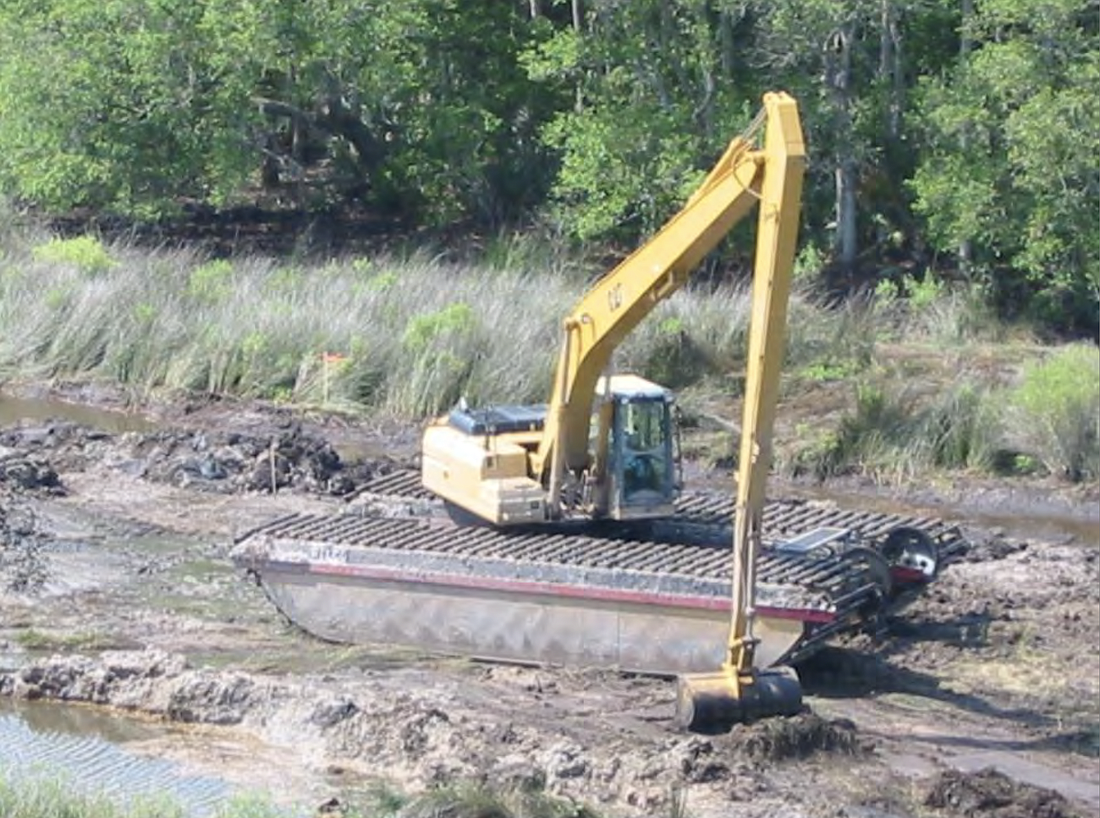- January 22, 2025
-
-
Loading

Loading

A project that the St. Johns Water Management District says would restore salt marshes in areas degraded by 50-year-old mosquito control dragline ditches has generated pushback from residents concerned that the project could further harm, rather than enhance, the marsh and coastal estuary.
"It was almost like some crazy April Fool’s joke when they said they we’re going to 'restore' this area. Honestly, we were shocked. ... This area is the wetlands; this is the marsh, and we have the habitat there. And it’s beautiful, it’s gorgeous."
— MATT HATHAWAY, resident
Residents whose homes look out on the project site began emailing county commissioners after earth-moving equipment appeared in the marsh.
Many attended a Sept. 17 County Commission workshop to voice concerns.
After Chuck Jacoby, a scientist with the St. Johns Water Management District, outlined the project objectives and spoke about similar projects in other counties, residents asked questions.
“We’d really like to see research on our specific area — our water, our habitat,” resident Matt Hathaway said at the workshop. “It was almost like some crazy April Fool’s joke when they said they we’re going to ‘restore’ this area. Honestly, we were shocked. Because when you go around Flagler County, you don’t get a lot of this: This area is the wetlands, this is the marsh, and we have the habitat there. And it’s beautiful, it’s gorgeous.”
He also noted that many residents have docks in the area, and are concerned about how the project would affect local boating. “A lot of those ditches are used as waterway ... to get to the Intracoastal,” Hathaway said.
Another resident, Christopher Smith, said he’d lived in the area for 23 years, and is a fisherman. He asked if reducing the embankments wouldn’t make the area more susceptible to damage from sea level rise.
Another resident said she wanted to see more research, and said the project should follow the Hippocratic oath: First, do no harm. Before any work begins, “We need specific, scientific data that says that we are not, in fact, a thriving estuary,” she said.
Resident Cass Ledyerd said he was 75 years old, and if “they start the project now, I’m going to be looking at a big, muddy morass for the rest of my life. I don’t like it.”
Jacoby said water in the area had been studied and declared impaired.
As to resident concerns about the immediate impact of the machines involved in process, he said, “We have looked at water quality around one of these restoration projects, and what we found was that it didn’t affect the water quality.”
The project, he said, will attempt to ensure that boaters still have Intracoastal access.
In a presentation, Jacoby said maintaining the estuary is important not only to the environment, but to the local economy.
“Our estuaries are important drivers of our economy, property values, way of life and defining much of what makes this area so special,” he said. “There is no single silver bullet to solve the problems. ... We need to be working on multiple fronts all at the same time.”
The wounds caused by the dragline ditches, he said, “are not fully healed, and without intervention cannot fully heal. The effect of these old ditches combined with sea level rise continue to cause the loss of wetlands to this day. ... The wetlands we had a decade ago are now gone. Some of the wetlands we have today will be gone next year. ... The goal of this project — and what we hope will be additional projects in other impacted wetlands — will be to restore these wetlands so that they can once again function fully, in a way that allows them to be sustainable and resilient to sea-level rise and thus provide important benefits into the future.”